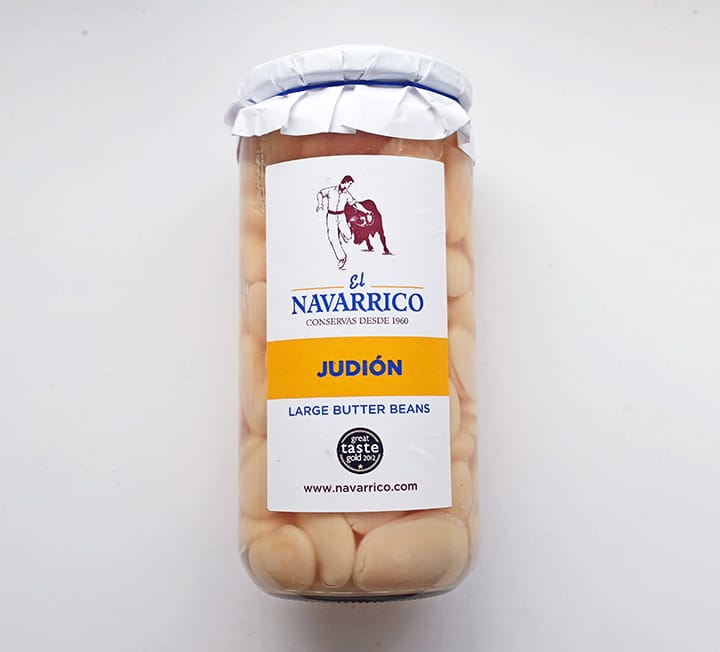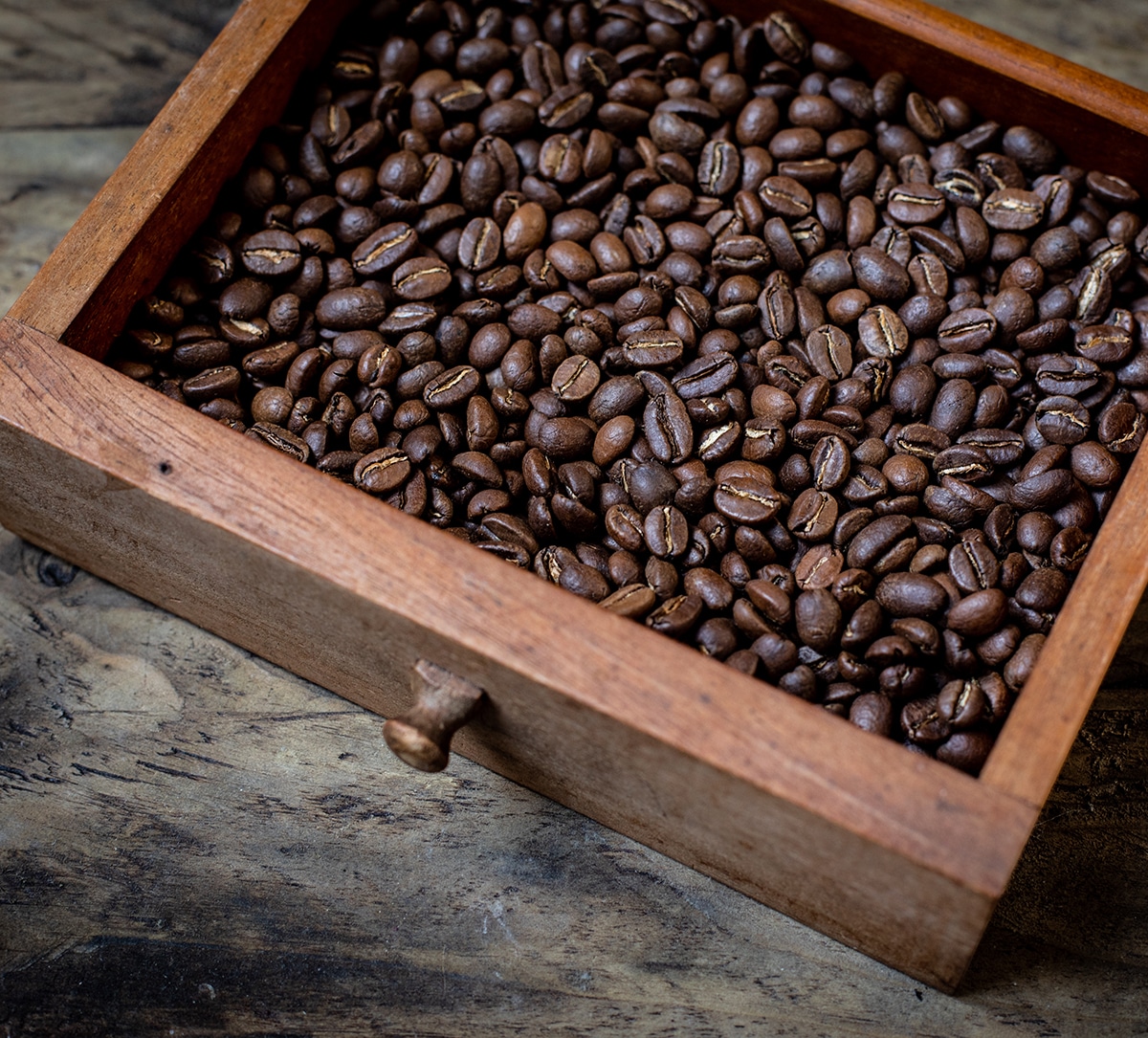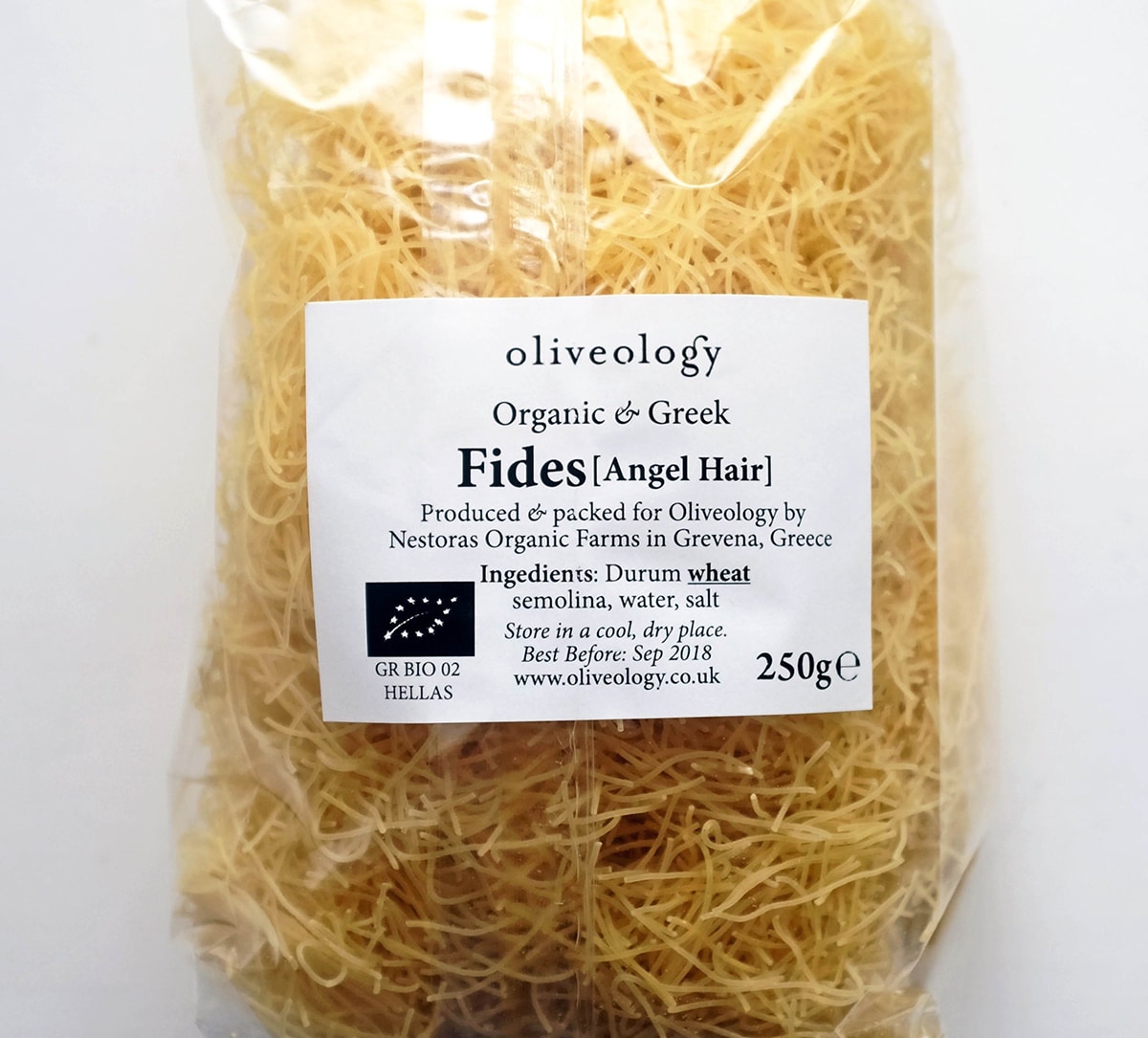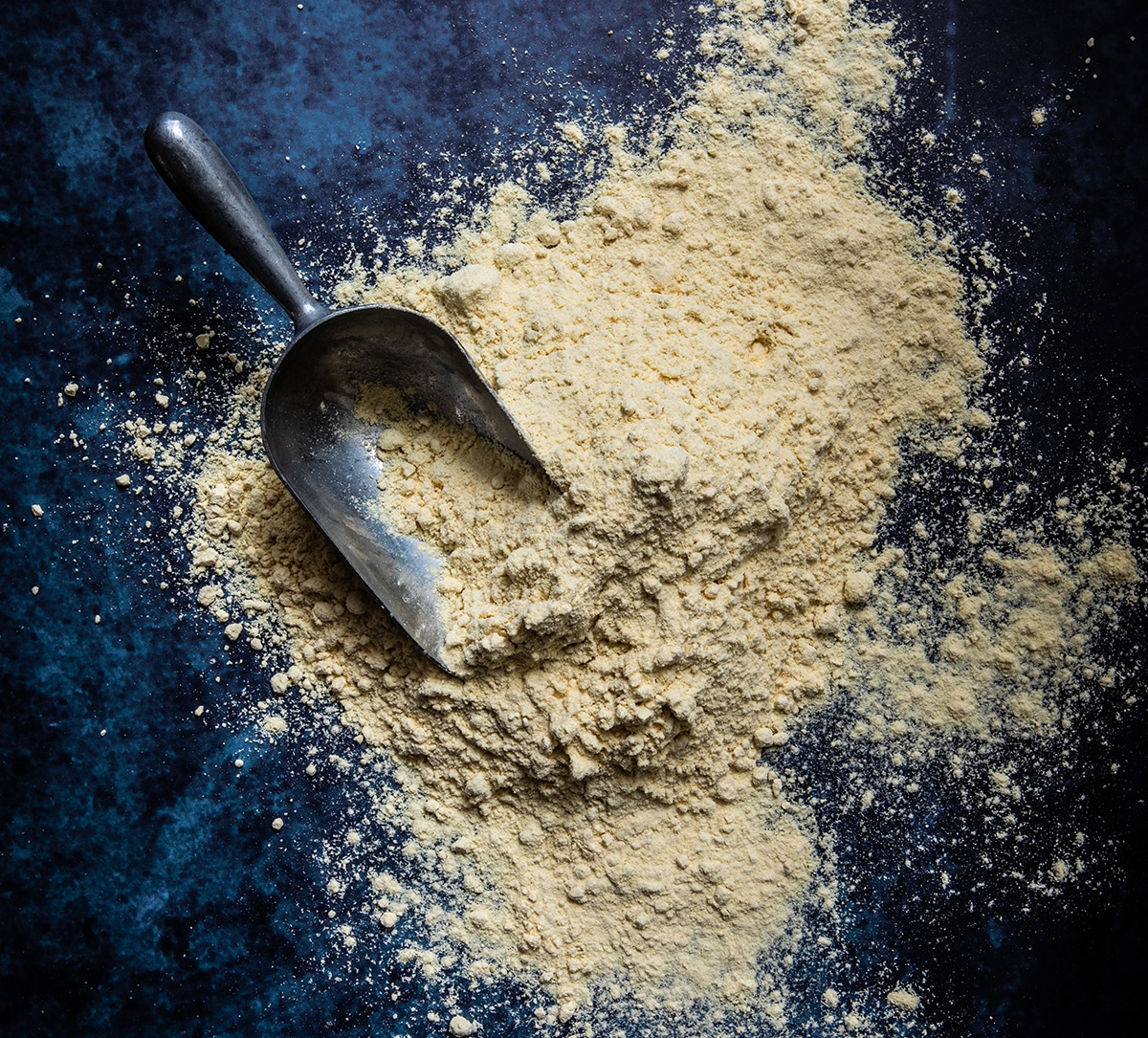Cupboard love: judión beans
Ed Smith explores the essential contents of his kitchen cupboard. This time: a jar of judión beans


“THEY’RE SMOOTH AND SILKY AND CAN ABSORB OTHER FLAVOURS, BUT THEIR FLAVOUR IS ENJOYABLE IN ITS OWN RIGHT”
Image: Ed Smith
Dried pulses are essential in a kitchen larder. They’re cheap, a good source of protein and, more importantly (to me, at least), flavoursome and versatile. The likes of cannellini, coco, haricot, chickpeas, split peas and butter beans can provide both bulk and interest, and are as appropriate in warming winter stews as they are in cooling summer salads. No one should ever use the ‘I can’t be bothered with all the soaking and cooking’ excuse; as far as hands-off kitchen jobs go, soaking and cooking dried beans is right up there with whatever is, well, most hands-off.
But you know what’s even more useful than dried beans and pulses? Yep, effort sceptics know the answer already: pre-cooked beans and pulses.
So I tend to only stand by my ‘no one should use the soaking and cooking excuse’ rule around 75 per cent of the time. Beans, peas and lentils you prepare yourself may taste better, but having a jar or two of pre-cooked pulses in the cupboard can be beneficial. They’re a long-lasting staple which take precisely 10 seconds to get ready – pop the lid and tip them out.
This is only true, though, if those beans are of the highest quality, and are soft and tender, yet still fully intact. The contents of supermarket tins and packs tend to be overcooked, flavourless and mushy. Look, instead, to the options at the Market.
The French and, in particular, the Spanish seem to be particularly good at canning cooked pulses. Le Marché du Quartier’s shelves, for example, heave with pulses and Brindisa stocks supreme chickpeas (garbanzos), haricot (alubias blancas), lentils (lentejas) and, my favourite, judiónes: bulbous, ivory-coloured butter beans, which are almost dairy-like in their creaminess.
Crucially, Brindisa’s judiónes are perfectly cooked – soft, yet with structural integrity. You can use them straight from the jar mixed with roast peppers and something with crunch, like chopped celery, perhaps to go with a tin of tuna or to sit under a chargrilled octopus tentacle. You can also mix them with warm, just-boiled potatoes without worrying that they’ll turn into a mush. Moreover, they can be thrown into a seafood or tomato and chorizo based soup or a stew to warm up, again in the knowledge that they’ll still be intact when it comes to eating them.
Judiónes make a quality addition to any meal. There’s no peeling, soaking, chopping or boiling required. Depending on your dish, you might not even need to drain them – that liquor in the jar is delicious and wholesome, not something that should be thrown away.
I like beans like this because they can be either the support act or the star. They’re smooth and silky and can absorb other flavours, but their flavour is enjoyable in its own right. All of these qualities are apparent in my fennel & manzanilla judión beans with mojama recipe. The sweet anise of gently softened diced fennel and the crisp, dry sherry add layers and layers of interest, and the mojama (air-dried tuna – another excellent Spanish larder item) brings a wallop of salt and umami. But the thing that keeps my spoon returning to the bowl is the beans. You’ll need just a few slices of wafer thin mojama, a good glug of olive oil, and perhaps some crusty bread and crisp leaves to make this a full-on meal. Which, if your larder is stocked with Brindisa’s judión beans, takes barely 15 minutes to throw together.


